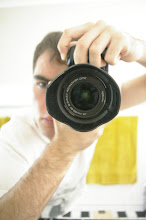It's one thing to take a well exposed photograph. It's another to take
a pleasant, well composed photograph. But to get a photograph that
makes the viewer go "wow", it's something different. It's the
difference between a good photo, and a great photo. To create an image
that invokes that kind of response is satisfying. And the secret to it
is very simple:
Show them something they have not seen before.
Sometimes this means capturing something our eyes can't see - a twenty
minute exposure under moonlight, an extreme macro of the reflections
in a dragonfly's eye, the fracture of a egg at the moment it hits a
surface. Sometimes it means showing the viewer something they may have
looked at, but never really seen - the subtle play of shadows and light on a building, the texture of worn paint on a weathered shed, the view of their city from directly above. Or maybe it's done in post processing - the cartoonish look of a HDR scene, the bizzare look of a Dave Hill shot. Reagrdless of how it's done, showing people something new, or in a new light, will invariably get the most response from your audience.
When you think about this, it explains the popularity of so many photographic techniques. For example, why is black and white photography so prominent, even in the digital age? Black and white gives the photographer a radiacly different perspective to shoot from, distilling the colourful cocktail we normally see into light and shadows. Not only does it create different prints, it forces the photographer to look at their surroundings differently.
And that in itself is the next step. Beyond taking great pictures, showwing people what they have never seen before, a great photographer can look at the world differenty and present that through their lens.
But how do you get to this stage? How do you learn to look from that different angle that so few do? There is no simple answer to that question, execept practise and experience.
Photographic excercises can help - try taking 50 pictures in one room of yoour house, or shooting an object from 10 different perspectives and see what you come up with. Once you exhaust the obvious, you will be left with the weird, the unusual and the bizzare. Don't be afraid to try something stupid, and don't be suprised if you walk away with no shots that you would feel proud displaying. But look for the differences, the subtities you discover. Think about how different that room looks when you hold the camera to the roof when compared to lying flat on the floor. It won't take long for you to start using these kinds of perspectives in your normal shooting.
Another one to try involves developing your photographic eye. Take a walk for 15 minutes, and try to spot as many photos as you can. Think about different angles, different lenses, focal points, composititions, exposures... and only after 15 minutes, take your camera out, pick your favourite mental photograph, and try to achive it. More experienced shooters might try to achieve it in one shot, and only allow themselves one shot. If you're newwer to this, try doing it in 5, and don't be afraid to look through the camera for a while making your shot. This kind of careful, methodic shooting really forces you to think about what you shoot, rather than clicking 5 pictures in 10 seconds, and walking away.
Doing both of these excercises are ways to help you develop your photography (pardon the pun), try them and I guarantee you will start to see more unusual and new perspectives in your photos. But for now, I'm afraid I'll have lick you later.
